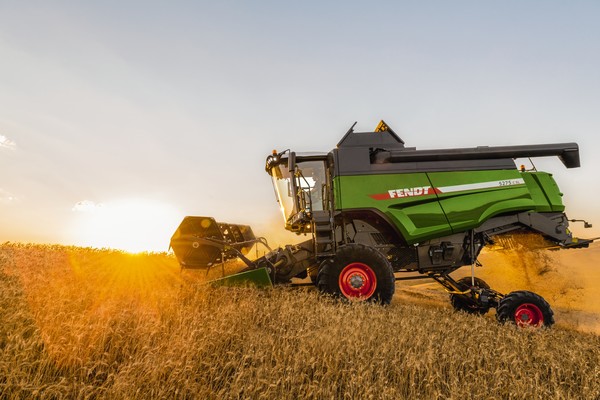
Agricultural machinery, the novelties of EU Regulation
The new legislation, which amends the 2006 “Machinery Directive”, came into force last June, at the end of a complex negotiation process started in 2021. For agricultural machinery manufacturers, the regulation will apply from 20 January 2027
Regulation (EU) 2023/1230, on machinery and repealing the current Machinery Directive 2006/42/EC, was published at the end of June 2023. The new Regulation is the result of a process started in 2021 by the European Commission which, while confirming the effectiveness and consistency of the directive, has decided to update some aspects of it. The main innovations concern specific rules on digital technologies such as artificial intelligence and cybersecurity. In addition, the Commission has chosen the Regulation as the legislative instrument, instead of the Directive, to ensure identical application in different Member States. The Regulation has already entered into force, but for machinery manufacturers it will apply from 20 January 2027; therefore, until that date, the machinery will still have to be placed on the market on the basis of the provisions of Directive 2006/42/EC.
EC certificates and declarations. A particular situation is that of EC type-examination certificates which remain valid until their expiry, even after the deadline laid down in the new Regulation (on 20 January 2027). But be careful: if even one of the newly introduced requirements, or one of the requirements modified by the new legislation, should apply to the product in question, the expiry date of the certificate will follow the date of application established by Regulation (EU) 2023/1230, namely January 20, 2027.
Regarding Declarations of Conformity: “The provisions of the new Regulation include, by amending them, all those of the Directive currently in force, so it is already possible to design and manufacture products taking into account the requirements of the new Regulation, while issuing the declaration according to the current Directive. The Blue Guide to Community legislation gives in paragraph 2.11 a useful solution for managing declarations of conformity close to the date of application”. Among the novelties of Regulation (EU) 2023/1230 it should be noted that machinery that requires special conformity assessment procedures (those mentioned in Annex IV of the current Directive) are collected in Annex I, divided into two parts. Part A lists the machines for which certification is mandatory with intervention of the Notified Body; instead, for machines in part B, if the reference harmonised standard exists and covers all applicable risks, it is possible to proceed with self-certification.
Instructions go digital. Another important innovation concerns the format of instructions: the new regulation explicitly provides for the possibility of providing them in digital format. The only exception is for machines that can be used by a consumer (regardless of what the manufacturer indicates): in this case, at least essential safety information must be provided on paper. Product reference standards will define what this essential information is.
The concept of “substantial modification”. In the Machinery Regulations the concept of “substantial modification” has been introduced, with the related obligations for the parties who make it. In substance, according to the new Regulation, the person who makes a substantial modification to the machinery or a related product is considered a manufacturer and is subject to the relevant obligations. However, a non-professional user who makes a substantial modification to his machine or related product for his own use is not considered a manufacturer.
Safety and risk assessment: AI comes into play. Another novelty compared to the current "Machinery Directive" is that relating to "safety components" (art. 3) which, unlike the current legislation, can be both physical and digital, including software. In addition, several essential health and safety requirements (hereinafter referred to as RESS) have been amended and added (Annex III), in particular to address machine-specific risks inherent in new digital technologies. Going into detail, the RESS relating to ergonomics (1.1.6), control systems (1.2.1), access to maintenance workstations (1.6.2), operating instructions, referring to vibration (2.2.1.1), seats (3.2.2), batteries (new requirement for batteries with automatic charging for mobile machines 3.5.1), mobile machinery or autonomous mobile related products (3.6.3.3) have been amended. In addition to the amendments to the existing RESS, Regulation (EU) 2023/1230 introduced new ones: 1.1.9 on protection against alteration (or in other words, cybersecurity), 3.2.4 on the supervisory function and 3.5.4 on the risk of contact with live overhead power lines. Where appropriate, the risk assessment must also include hazards related to the autonomous and evolving behaviour of machinery. The legislation refers to Artificial Intelligence (AI), but it should be specified that AI systems are classified as “high-risk” (Annex I Part A) only if they continue to learn and change their behaviour even after being placed on the market. Finally, the principles of safety integration (RESS 1.1.2.) have been amended to allow users to verify the safety functions of machines.
For agricultural machinery manufacturers, therefore, the Regulation will certainly have an impact, both formally and substantially. In particular, given the exponential increase in the uptake of digital technologies in agricultural mechanisation, manufacturers will need to be prepared to address the new requirements on cybersecurity and artificial intelligence and, consequently, also the specific regulations that the Commission is developing in this regard.








